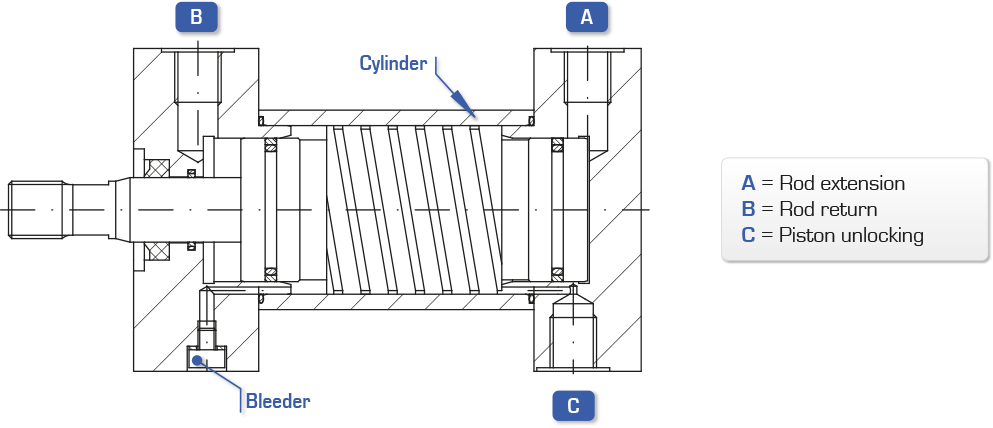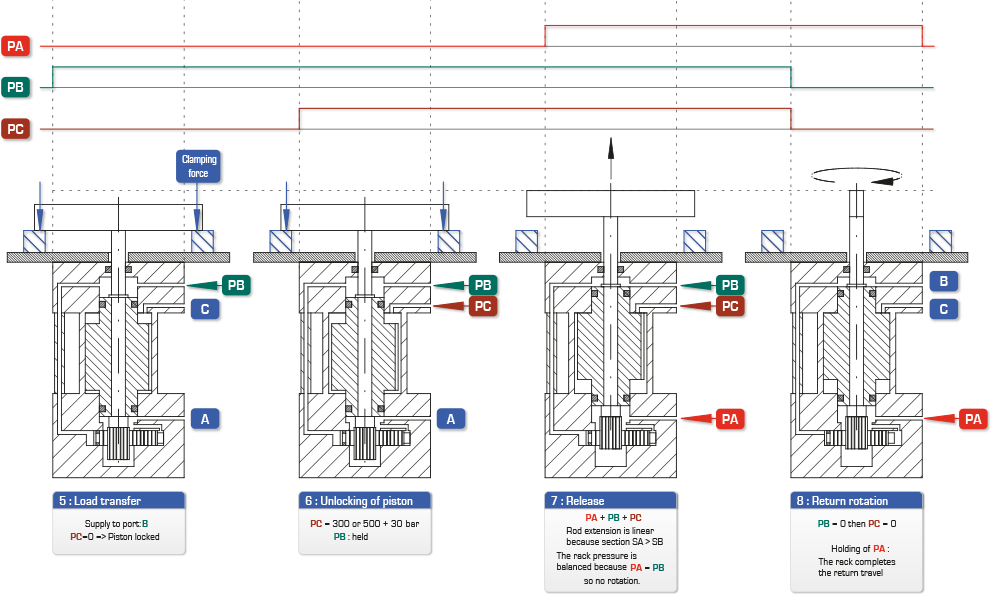Positive locking cylinder
Description
T-Lock® (displacement) and R-Lock® (displacement and rotation), clamps developed and patented by Quiri, incorporate a system based on the principle of binding through the absence of pressure. Release is achieved by the use of hydraulic fluid.
Operating principle of T-Lock© /R-Lock®
The diameter of the ring is smaller than that of the piston, thus binding them through adhesion due to the deformation of the materials present. Release is achieved by means of hydraulic pressure applied uniformly between the surfaces.

Operating principle of T-Lock® clamp
• The piston is assembled to fig snugly inside the cylinder.
• When release port C is supplied, the cylinder is deformed, allowing the piston to move freely.
• The clamp then operates like a conventional double-acting clamp using traction (PB) or thrust (PA).
• When the release pressure is removed, the piston is held in the cylinder by binding.
• The clamping force is maintained without pressure.

Phase diagrams
The clamp is not under pressure during clamping

Operating principle of R-Lock® clamp
R-Lock® clamps use the same principle as T-Lock® clamps, with a planar arm rotation system in addition.
The different stages, namely planar rotation, clamping and release, are achieved using only three supply ports, which simplifies the hydraulic supply system.
Phase diagrams
Clamping

Release
